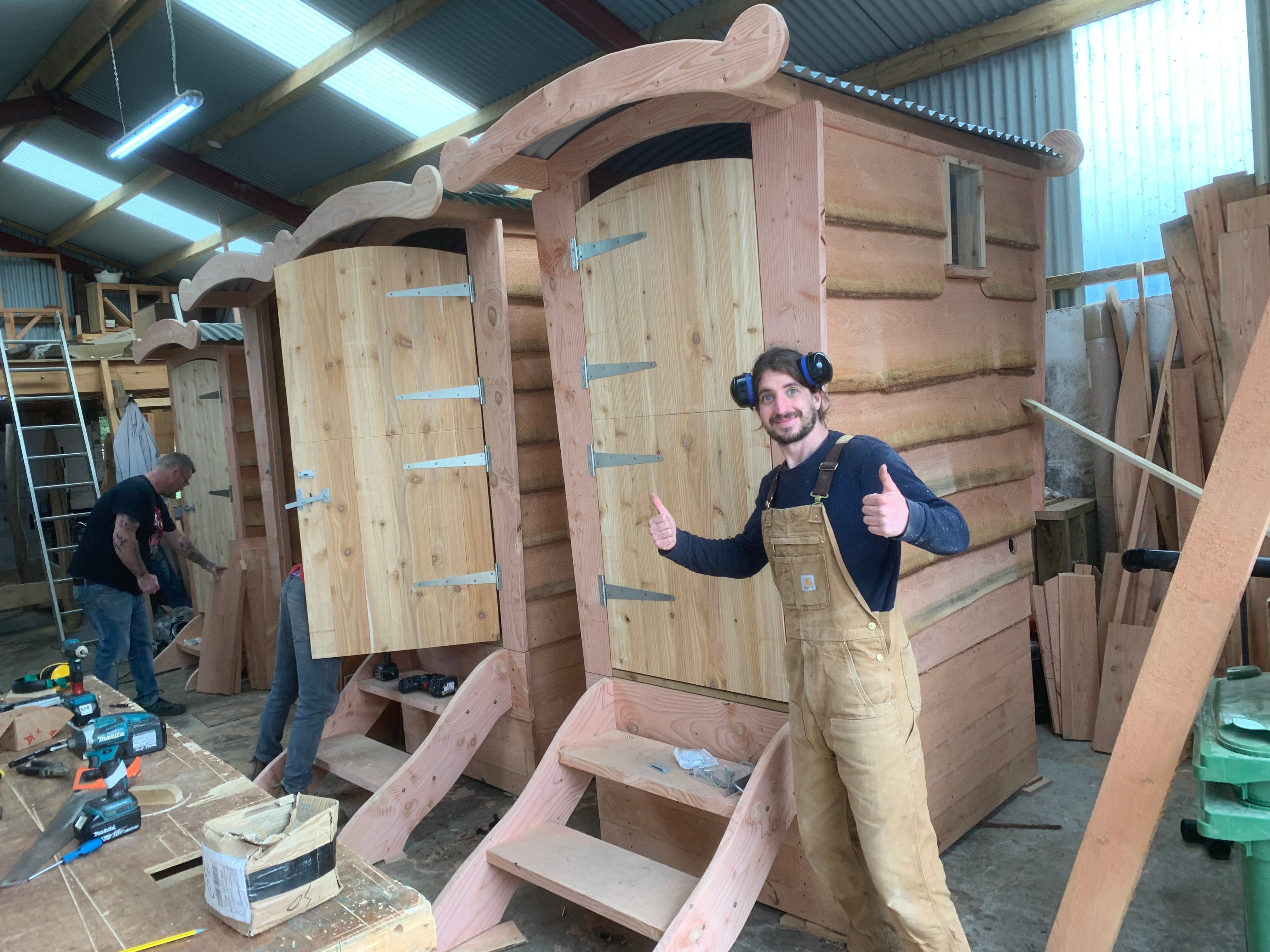Compost Toilet FAQ
We know that compost toilets can seem a bit baffling at first — Where does everything go? Does it smell? How does it actually work?
The truth is, it’s really quite simple. After building and installing compost toilets for over 25 years, we’ve heard every question imaginable — so we’ve put together this guide to explain how they work, what to expect, and why so many people are choosing them.
At Free Range Designs, we believe in creating beautiful, practical, and sustainable toilets that sit comfortably in natural surroundings. Whether your toilet is for a garden, allotment, churchyard, or campsite, this FAQ will walk you through everything from installation and maintenance to everyday use.
What exactly is a composting toilet, and how does it work?
A composting toilet is a simple, eco-friendly system that turns human waste into compost using natural aerobic processes. Instead of flushing with water, waste is collected in a contained chamber where it breaks down naturally with the help of oxygen and organic materials such as sawdust. Over time, this turns into a safe, nutrient-rich compost that can be used around trees and non-edible plants.
Do composting toilets smell?
No — a properly designed and maintained compost toilet shouldn’t smell at all. The key is urine separation, which keeps the compost dry and prevents odours. Our toilets use a urine diverter to direct liquids away from solids, reducing ammonia build-up. Adding a scoop of sawdust or wood shavings after each use helps balance the compost and keeps everything fresh and aerated.
Where can composting toilets be installed?
Composting toilets can go just about anywhere! They’re ideal for off-grid cabins, gardens, allotments, campsites, nature reserves, churchyards, schools, and visitor centres — anywhere you want a comfortable, sustainable toilet without needing plumbing or a sewage connection.
How often do composting toilets need to be emptied?
The frequency of emptying depends on the usage and size of the poo bin. A 25 litre bucket - as used in the Basic Composting Toilet - will fill up much quicker than a wheelie bin, as used in the Bog Standard and our other composting toilets.
In general, most composting toilets need to be emptied every few months if used by one or two people. For larger families or higher usage, this may need to be done more frequently.
What type of maintenance is required?
Compost toilets are low maintenance, but like any toilet, they do need a little care. Keep an eye on sawdust levels and top up regularly. Check the container every so often and empty it when it’s getting full.
Wipe down surfaces as you would with any bathroom, and if your toilet is outside, make sure the ventilation and airflow remain clear — this helps everything dry and compost efficiently.
What are the environmental benefits of using a composting toilet?
Composting toilets save thousands of litres of water every year, reduce pollution, and return valuable nutrients to the soil. They help create a closed, sustainable system where nothing is wasted.
By choosing a compost toilet, you’re helping to protect waterways, conserve resources, and promote a more self-sufficient way of living — all while enjoying a comfortable, odour-free toilet.
Can I get funding or grants for a compost toilet?
Yes — in some cases, you can! Depending on your location and purpose, there may be grants or community funding available to help cover the cost of installing a compost toilet.
- Community and church projects: Local councils, environmental trusts, and organisations like the National Lottery Community Fund or Heritage Fund often support eco-friendly facilities for public use.
- Allotments and schools: Some councils and sustainability programmes offer small grants for improving site accessibility or reducing water use.
- Charities and visitor centres: Off-grid and environmental education sites sometimes qualify for rural development or eco-innovation funding.
We’re happy to advise or provide supporting information if you’re applying for a grant — just get in touch with us!

